Renewable Transition

In what ways can technology accelerate energy transition ?
Energy transition is the process of shifting from traditional, non-renewable energy sources to cleaner and more sustainable alternatives. Technology plays a pivotal role in this transition by improving efficiency, reducing costs, and enhancing the performance of renewable energy systems. Key areas where technology can make a difference include renewable energy production, energy storage, smart grids, energy efficiency, and carbon capture and utilization. Innovations in these areas promise a cleaner, more sustainable, and resilient energy future for all.

How does energy transition contribute to combating climate change ?
The text discusses the importance of energy transition in combating climate change. It outlines how this transition contributes to reducing carbon emissions, increasing energy efficiency, promoting sustainable practices, stimulating innovation and economic growth, integrating smart grids and energy storage, and enhancing international cooperation. The shift from fossil fuels to renewable energy sources is crucial for mitigating global warming by directly addressing greenhouse gas emissions.

What role do renewable energies play in the energy transition process ?
The role of renewable energies in the energy transition process is to help decarbonize the power sector, promote sustainability, provide economic benefits, improve energy security, and enhance public health. Renewable sources like solar, wind, hydropower, and geothermal emit little to no greenhouse gases during operation, making them crucial for reducing carbon emissions associated with electricity generation. These sources are also sustainable as they are replenished naturally and do not deplete over time. Investing in renewable energies can lead to job creation, technological innovation, and cost savings in the long run. By diversifying energy sources, countries can reduce their dependence on imported fuels and enhance their energy security. Additionally, renewable energies have lower environmental impacts than fossil fuels, leading to improved air quality and public health benefits.

What are the potential health benefits of an energy transition ?
The energy transition from fossil fuels to renewable sources can significantly improve public health by reducing air pollution, mitigating climate change effects, creating economic opportunities in clean energy sectors, and promoting active lifestyles. This shift benefits respiratory and cardiovascular health and can lead to better access to healthcare services. Policies supporting the energy transition should consider both environmental and health objectives for a sustainable and healthier future.
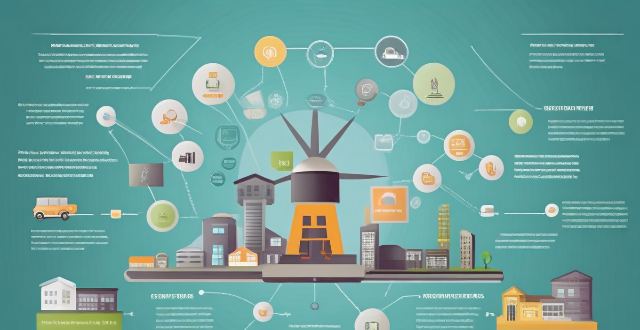
What impact does energy transition have on employment and job creation ?
The energy transition from fossil fuels to renewable sources significantly impacts job creation and employment. This shift brings growth in renewable energy sectors, green economy expansion, research & development, infrastructure development, and energy efficiency services. However, it also causes employment shifts such as a decline in fossil fuel industries, skill transition, geographical impact, supply chain effects, and policy-driven changes. Managing these challenges through strategies like reskilling programs and supportive policies is crucial for a just and equitable energy future.

How does energy transition affect national security and geopolitics ?
Energy transition has significant implications for national security and geopolitics, driven by concerns over climate change, energy security, and economic competitiveness. It promotes diversification of energy sources, enhances energy independence, and addresses cybersecurity risks, strengthening national security. Energy transition can alter power dynamics, mitigate climate change, enhance economic competitiveness, and contribute to environmental security, all of which have significant geopolitical consequences. As the world continues to transition towards renewable energy, it is essential for countries to develop strategies to navigate the complex interplay between energy transition, national security, and geopolitics.

How will the shift towards electric vehicles impact energy transition goals ?
Electric vehicles play a crucial role in achieving energy transition goals by reducing greenhouse gas emissions, promoting renewable energy sources, and improving energy efficiency. They produce zero tailpipe emissions, leading to improved air quality in urban areas. The increased demand for renewable energy to power EVs drives the development of solar and wind technologies. EVs are more energy-efficient than traditional vehicles and can help reduce energy waste through smart charging systems. However, challenges such as infrastructure development and battery production must be addressed, while opportunities like job creation and technological innovation should be capitalized on to accelerate progress towards a sustainable future.
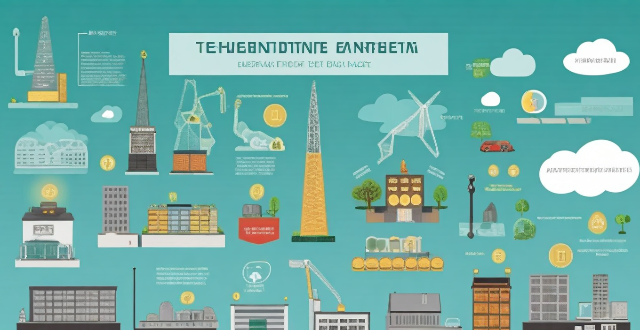
How is renewable energy affecting the traditional energy market ?
Renewable energy sources are having a significant impact on the traditional energy market, affecting pricing, market share, job creation, and environmental concerns. The increased efficiency and reduced installation costs of renewable technologies have made them more competitive with traditional energy sources, leading to declining electricity prices overall. Additionally, the growing demand for renewable energy sources has led to an increase in their market share, particularly for solar and wind power. The transition to renewable energy is also creating new job opportunities across various sectors of the economy, while addressing environmental concerns associated with fossil fuel consumption.

What is the role of renewable energy in achieving carbon neutrality ?
Renewable energy is crucial for achieving carbon neutrality, which involves balancing carbon emissions with offsetting actions. By reducing reliance on fossil fuels and greenhouse gas emissions, renewable sources such as wind and solar contribute significantly to this goal. Renewable energy also promotes energy efficiency, economic growth, and energy independence while mitigating climate change impacts. It supports sustainable development goals and fosters innovation and public engagement in environmental issues. The transition to renewable energy offers long-term environmental benefits, making it essential for a sustainable future with stable climates, thriving economies, and healthier societies.

Can renewable energy sources effectively replace fossil fuels ?
- Renewable energy sources are sustainable and produce fewer emissions than fossil fuels. - Intermittency, storage, and cost are challenges to the adoption of renewable energy. - Grid integration, energy storage advancements, and government policies can help overcome these challenges.
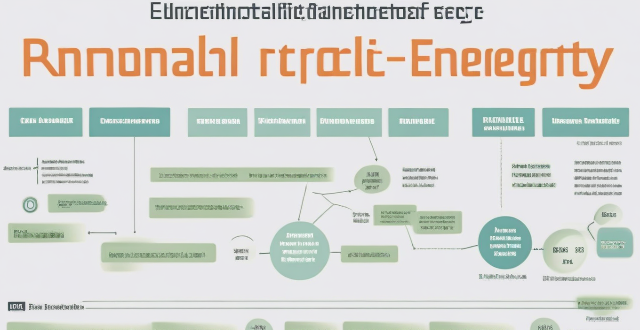
How do international climate agreements influence national policies on renewable energy ?
International climate agreements significantly shape national renewable energy policies by setting targets, offering financial aid and technology transfer, promoting innovation and collaboration, and creating market opportunities. This influence is evident in countries' ambitious renewable energy goals, their participation in global initiatives, and the growth of related industries. Such concerted efforts are crucial for achieving a sustainable, low-carbon future.

How do renewable energy credits and incentives influence the adoption of green technologies ?
Renewable energy credits (RECs) and incentives are crucial for promoting the adoption of green technologies. They offer economic benefits to individuals, businesses, and governments investing in renewable energy sources, making these technologies more financially attractive. RECs represent proof of electricity generated from renewable sources, while incentives can include tax breaks, grants, rebates, and feed-in tariffs. These mechanisms reduce upfront costs, provide long-term financial benefits, enhance market competitiveness, drive innovation, and foster environmental stewardship. Overall, RECs and incentives are essential for accelerating the transition towards a sustainable energy future.
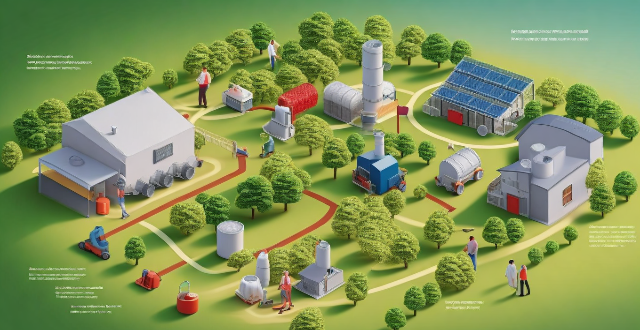
What role do renewable energies play in achieving climate objectives ?
Renewable energies play a crucial role in achieving climate objectives by reducing greenhouse gas emissions, promoting energy security, and driving economic growth. By transitioning to renewable sources such as solar, wind, hydro, and geothermal power, we can reduce the overall carbon footprint of our energy systems and mitigate the effects of climate change. Renewable energies also promote energy security by diversifying energy sources, increasing local energy production, and stabilizing energy prices. Additionally, the transition to renewable energies creates job opportunities, stimulates innovation, and attracts investment, contributing to economic growth. Overall, prioritizing the development and adoption of renewable energy technologies is essential for achieving a cleaner, more sustainable future.

What is the role of renewable energy in achieving climate commitments ?
Renewable energy is a key component of global efforts to reduce greenhouse gas emissions and mitigate climate change, contributing to environmental protection, economic prosperity, and social well-being. It reduces carbon footprint, enhances energy security, stimulates economic growth, improves public health, supports sustainable development, advances technology and innovation, and contributes to international cooperation. The transition to renewable energy is crucial for meeting climate commitments and ensuring a sustainable future.
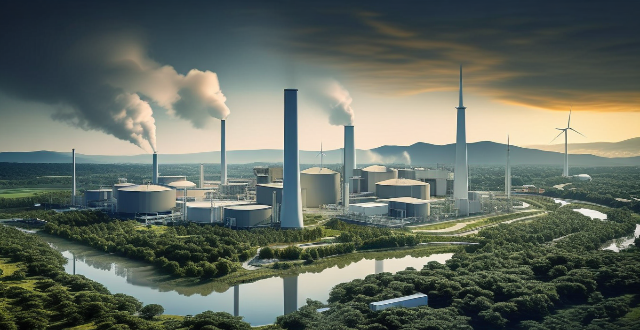
What is the impact of renewable energy on emission reduction goals ?
The shift to renewable energy sources such as solar, wind, hydro, and geothermal power is vital for reducing greenhouse gas emissions and achieving global emission reduction goals. This transition brings multiple benefits including decreased reliance on fossil fuels, improved air quality, enhanced energy security, economic stimulation through job creation and long-term cost savings, technological innovation leading to reduced costs, and significant contributions to mitigating climate change. As technology advances and economies of scale are achieved, renewable energy's role in facilitating further progress toward emission reduction objectives will become increasingly important.

How can climate finance be leveraged to support renewable energy projects ?
Climate finance plays a crucial role in supporting renewable energy projects. Here are some ways to leverage it: 1. Public-Private Partnerships (PPPs) can be used to attract private investment into renewable energy projects. 2. Green Bonds can be issued to fund environmentally friendly projects such as solar and wind farms. 3. Carbon Pricing Mechanisms can generate revenue that can be invested in renewable energy projects. 4. International Climate Finance Initiatives can provide funding for renewable energy projects in developing countries. 5. Crowdfunding Platforms offer another way to raise funds for renewable energy projects. By using a combination of these strategies, we can accelerate the transition towards a more sustainable future.

What is the role of renewable energy in combating climate change ?
The text discusses the role of renewable energy in combating climate change. It defines renewable energy as derived from natural processes that are constantly replenished, including solar, wind, hydroelectric, geothermal, and biomass energy. The importance of renewable energy is highlighted by its low carbon emissions, sustainability, and economic benefits. Renewable energy combats climate change by reducing greenhouse gas emissions, diversifying the energy mix, promoting energy efficiency, stimulating innovation, and enhancing environmental stewardship. The transition to renewable energy presents economic opportunities and promotes innovation, with a profound impact on slowing climate change.

What steps can governments take to promote renewable energy jobs ?
Governments can promote renewable energy jobs through various policies and incentives. They can implement regulations like Renewable Portfolio Standards, Feed-in Tariffs, Net Metering Laws, and Renewable Energy Certificates. Financial incentives such as tax credits, grants, loans, and investment tax exemptions can also be provided. Governments can support research and development by funding studies, collaborating with academia, forming public-private partnerships, and supporting startups. Education and training programs, infrastructure development, streamlining permitting processes, encouraging local production and consumption, and international cooperation are other steps that can be taken to promote renewable energy jobs.

How can carbon credits be used to incentivize renewable energy adoption ?
Carbon credits can incentivize renewable energy adoption by creating a market, providing financial support, encouraging sustainable practices, and raising awareness about climate change.

How can I transition into a new career field or industry ?
Transitioning into a new career field or industry requires careful planning, research, and a willingness to learn new skills. To make the transition smoother, assess your skills and interests, research potential careers, gain relevant experience through courses, certifications, volunteering, or part-time jobs, update your resume and cover letter, and apply for jobs while preparing for interviews. By following these steps, you'll be well-prepared to make a successful transition into an exciting new chapter of your professional life.

How can governments promote and support energy transition ?
Governments can promote and support energy transition through policy incentives, research and development, education and awareness, infrastructure development, collaboration with the private sector, and international cooperation.

What is energy transition and why is it important ?
Text: Energy transition is the shift from traditional to renewable energy sources, important for reducing greenhouse gas emissions, promoting sustainable development, and improving energy security. Benefits include economic growth, environmental protection, and social progress.

What role do renewable energy sources play in combating climate change ?
Renewable energy sources play a crucial role in combating climate change by reducing greenhouse gas emissions, promoting sustainable development, creating job opportunities, and enhancing energy security. Solar, wind, hydropower, and other renewable energy sources are clean and sustainable alternatives to fossil fuels. By investing in these sources, we can slow down the rate of climate change and create a cleaner, more sustainable future for all.

How do climate policies influence renewable energy development and adoption ?
Climate policies play a crucial role in shaping the trajectory of renewable energy development and adoption. These policies are designed to mitigate the effects of climate change by reducing greenhouse gas emissions and promoting the use of clean energy sources. In this article, we will explore the various ways in which climate policies influence renewable energy development and adoption. Governments around the world have implemented a range of incentives and subsidies to encourage the development and adoption of renewable energy sources. These include feed-in tariffs, renewable portfolio standards, tax credits and exemptions, and research and development funding. Carbon pricing mechanisms, such as carbon taxes and cap-and-trade systems, are designed to put a price on carbon emissions. By making fossil fuels more expensive relative to renewable energy sources, these policies create an economic incentive for businesses and consumers to switch to cleaner energy alternatives. Governments also impose regulatory measures to promote renewable energy development and adoption. These include building codes and standards, energy efficiency standards, and renewable energy targets. Public awareness and education campaigns aim to increase public awareness about the benefits of renewable energy and encourage its adoption. These campaigns promote energy conservation, support local renewable energy projects, and raise awareness about the environmental and economic benefits of clean energy sources.

How do renewable energy policies vary across different countries and regions ?
Renewable energy policies globally are shaped by economic, environmental, and political factors. Europe leads in renewable adoption with Germany's Energiewende, Spain's feed-in tariffs (FiTs), and Denmark aiming for fossil fuel independence. North America uses state-level RPS, tax incentives, and market-driven approaches. Asia sees rapid growth with China's government support and India's ambitious targets. Africa focuses on access to electricity through projects like South Africa's REIPPPP. Latin America balances economic development and sustainability, with Brazil expanding into solar and Mexico deregulating its electricity market. Policies include FiTs, quota systems, auctions, and financial incentives, varying by region's resources and priorities.

What is wind energy and how effective is it compared to other renewable sources ?
This article provides an overview of wind energy, discussing its definition, effectiveness compared to other renewable sources, cost-effectiveness, environmental impact, scalability, and availability. It highlights the benefits of wind energy as a clean and sustainable source of electricity that can be produced at any scale and in many parts of the world.

How can a carbon tax be used to encourage the development of renewable energy sources ?
A carbon tax is a fee on burning carbon-based fuels that aims to reduce emissions by making fossil fuels more expensive, encouraging the use of renewable energy sources. It directly impacts prices, changes consumer behavior, provides economic incentives for renewables, creates market signals for businesses, and supports regulatory frameworks. This leads to increased investment in research and development, subsidies, long-term planning security, innovation, and stricter efficiency standards, all of which contribute to the development of renewable energy sources.

How does energy efficiency fit into the broader strategy of energy transition ?
Energy transition, the shift to cleaner energy sources, is crucial for mitigating climate change. Energy efficiency plays a key role in this transition by reducing demand and consumption, leading to multiple benefits including reduced emissions, cost savings, and increased energy security. Strategies for integrating energy efficiency include optimizing building design, transportation, industrial processes, promoting renewable energy use, consumer education, implementing supportive policies, and investing in research and development. By prioritizing energy efficiency alongside renewable energy adoption, we can expedite the move towards a sustainable future.

What are the main challenges in achieving a successful energy transition ?
The energy transition to renewable sources faces numerous challenges that encompass technological, economic, policy, social, infrastructure, environmental, geopolitical, and natural limitations. Addressing these obstacles requires a comprehensive approach involving technological innovation, economic incentives, policy support, cultural shifts, international cooperation, and consideration of environmental impacts and resource availability.

How can cities lead the way in energy transition initiatives ?
Cities can lead energy transition by setting clear goals, implementing regulations, investing in infrastructure, engaging communities, adopting technology, and using financial strategies.